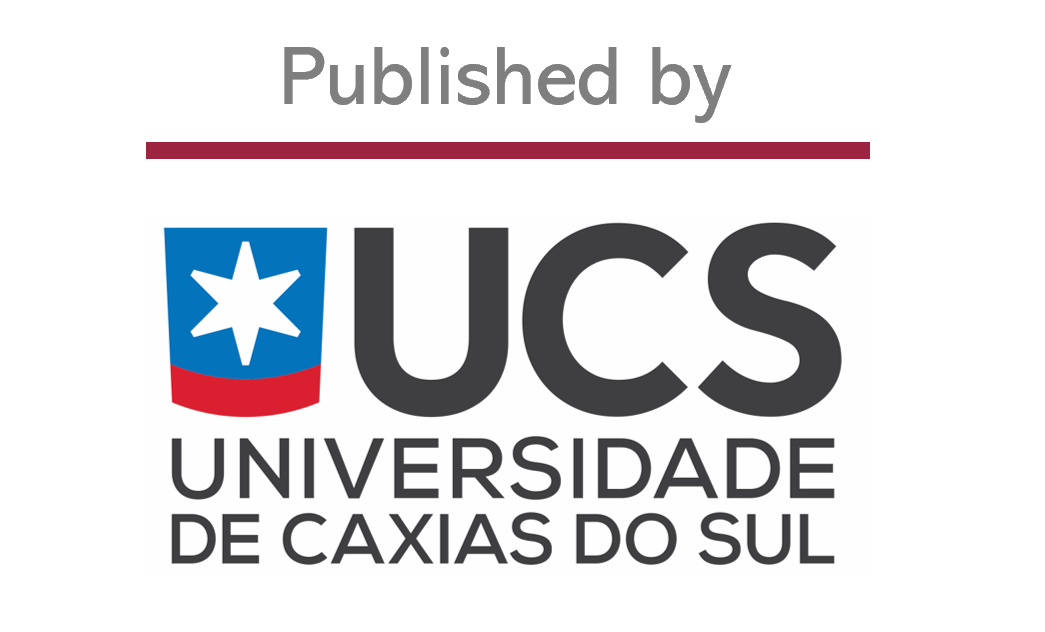Effect of dynamic crosslinking on phase morphology and mechanical properties of polyamide 6,12/ethylene vinyl acetate copolymer blends
DOI:
https://doi.org/10.18226/23185279.v3iss1p23Abstract
The dynamic crosslinking of polyamide 6,12 and ethylene vinyl acetate (PA6,12/EVA) blends in the mixing chamber of a torque rheometer was investigated. EVA was selectively crosslinked within the PA6,12 phase through free radical reactions using dycumil peroxide. The degree of EVA crosslinking in the PA12,6/EVA materials was estimated based on the gel content (insoluble EVA fraction). The PA6,12/EVA phase morphology was investigated by scanning electron microscopy. The mechanical properties were investigated by determining the tensile strength and hardness. The half-life time (t1/2) for homolytic scission of the dcumil peroxide (DCP) was ~6s, and this time is longer than the dispersion time of the DCP in the blends. The addition of DCP resulted in increased torque values due to specific crosslinking in the EVA phase. For the pure EVA and its blends with PA6,12 the stabilized torque values increased proportionally with the amount of DCP in the system, due to a higher degree of crosslinking of the elastomeric phase. The gel content of the dynamically crosslinked blends increased with the amount of DCP incorporated until 4 phr. At 1 phr the gel content value was 2.6wt.%, while at 4 phr it was 17wt.%. For the polymer blend with 8 phr of DCP a lubricating effect contributed to reducing the gel content. The dynamically crosslinked blends, regardless of the amount of DCP added, showed a reduction in the mechanical properties, which is related to the morphological features of the system due to the low mechanical fragmentation during melt processing.
References
M. Narathichat, C. Kummerlowe, et al., “Thermoplastic natural rubber based on polyamide-12: Influence of blending technique and type of rubber on temperature scanning stress relaxation and other related properties,” Journal of Applied Polymer Science, vol. 121, no. 2, pp. 805–814, 2011.
F. Bondan, M. R. Soares, and O. Bianchi, “Effect of dynamic cross-linking on phase morphology and dynamic mechanical properties of polyamide 12/ethylene vinyl acetate copolymer blends,” Polymer bulletin, vol. 71, no. 1, pp. 151–166, 2014.
C. F. Antunes, A. Machado, and M. Van Duin, “Morphology development and phase inversion during dynamic vulcanisation of epdm/pp blends,” European Polymer Journal, vol. 47, no. 7, pp. 1447–1459, 2011.
T. Chatterjee, S. Wiessner, et al., “Novel thermoplastic vulcanizates (tpvs) based on silicone rubber and polyamide exploring peroxide cross-link.,” Express Polymer Letters, vol. 8, no. 4, 2014.
O. Bianchi, A. Zattera, and L. Canto, “Dynamic vulcanization of hdpe/eva blend using silane,” Journal of Elastomers and Plastics, vol. 42, no. 6, pp. 561–575, 2010.
D. R. Paul, and C. B. Bucknall, Polymer blends, Wiley, 2000.
A. Coran, and R. Patel, “Thermoplastic elastomers based on dynamically vulcanized elastomer-thermoplastic blends,” Hanser Publishers, Munich, 1996.
A. R. Bhattacharyya, A. K. Ghosh, and A. Misra, “Reactively compatibilised polymer blends: a case study on pa6/eva blend system,” Polymer, vol. 42, no. 21, pp. 9143–9154, 2001.
O. Bianchi, J. D. N. Martins, et al., “Changes in activation energy and kinetic mechanism during eva crosslinking,” Polymer Testing, vol. 30, no. 6, pp. 616–624, 2011.
O. Bianchi, R. Oliveira, et al., “Assessment of avrami, ozawa and avrami–ozawa equations for determination of eva crosslinking kinetics from dsc measurements,” Polymer Testing, vol. 27, no. 6, pp. 722–729, 2008.
A. Nesterov, and E. Lebedev, “Modification of polymers by polymeric additives,” Russian Chemical Reviews, vol. 58, no. 8, pp. 795–807, 1989.
G. Moad, “The synthesis of polyolefin graft copolymers by reactive extrusion,” Progress in Polymer Science, vol. 24, no. 1, pp. 81–142, 1999.
N. Mekhilef, and H. Verhoogt, “Phase inversion and dual-phase continuity in polymer blends: theoretical predictions and experimental results,” Polymer, vol. 37, no. 18, pp. 4069–4077, 1996.
M. Faker, M. R. Aghjeh, et al., “Rheology, morphology and mechanical properties of polyethylene/ethylene vinyl acetate copolymer (pe/eva) blends,” European Polymer Journal, vol. 44, no. 6, pp. 1834–1842, 2008.
R. Robertson, and D. Paul, “Stress–strain behavior of polyolefin blends,” Journal of Applied Polymer Science, vol. 17, no. 8, pp. 2579–2595, 1973.
K. Chatterjee, and K. Naskar, “Study on characterization and properties of nanosilica-filled thermoplastic vulcanizates,” Polymer Engineering & Science, vol. 48, no. 6, pp. 1077–1084, 2008.
J. Van Dyke, M. Gnatowski, and A. Burczyk, “Solvent resistance and mechanical properties in thermoplastic elastomer blends prepared by dynamic vulcanization,” Journal of applied polymer science, vol. 109, no. 3, pp. 1535–1546, 2008.
M. I. Kohan, et al., Nylon plastics handbook, vol. 378, Hanser Munich, 1995.
A. Zattera, O. Bianchi, et al., “Influence of composition and crosslinking on mechanical and thermal properties of recycled polyethylene/eva mixtures,” Progress in rubber, plastics and recycling technology, vol. 22, no. 2, pp. 69–87, 2006.
O. Bianchi, R. Fiorio, et al., “Crosslinking kinetics of blends of ethylene vinyl acetate and ground tire rubber,” Journal of Elastomers and Plastics, vol. 41, no. 2, pp. 175–189, 2009.
J. N. Martins, T. G. Klohn, et al., “Dynamic mechanical, thermal, and morphological study of abs/textile fiber composites,” Polymer bulletin, vol. 64, no. 5, pp. 497–510, 2010.
E. Freire, O. Bianchi, et al., “Processability of pvdf/pmma blends studied by torque rheometry,” Materials Science and Engineering: C, vol. 29, no. 2, pp. 657–661, 2009.
Z. Tadmor, and C. G. Gogos, Principles of polymer processing, John Wiley & Sons, 2013.
A. Msakni, P. Chaumont, and P. Cassagnau, “Diffusion of the dicumyl peroxide in molten polymer probed by rheology,” Rheologica acta, vol. 46, no. 7, pp. 933–943, 2007.
G. Martin, C. Barres, et al., “Morphology development in thermoplastic vulcanizates (tpv): Dispersion mechanisms of a pre-crosslinked epdm phase,” European Polymer Journal, vol. 45, no. 11, pp. 3257–3268, 2009.
M. Akiba, and A. Hashim, “Vulcanization and crosslinking in elastomers,” Progress in polymer science, vol. 22, no. 3, pp. 475–521, 1997.
W. Zhou, and S. Zhu, “Esr study of peroxide-induced cross-linking of high density polyethylene,” Macromolecules, vol. 31, no. 13, pp. 4335–4341, 1998.
D. Forsstrom, and B. Terselius, “Thermo oxidative stability of ¨polyamide 6 films i. mechanical and chemical characterisation,” Polymer degradation and stability, vol. 67, no. 1, pp. 69–78, 2000.
T. Karstens, and V. Rossbach, “Thermo-oxidative degradation of polyamide 6 and 6, 6. kinetics of the formation and inhibition of uv/vis-active chromophores,” Die Makromolekulare Chemie, vol. 190, no. 12, pp. 3033–3053, 1989.
A. J. Lovinger, and M. Williams, “Tensile properties and morphology of blends of polyethylene and polypropylene,” Journal of Applied Polymer Science, vol. 25, no. 8, pp. 1703–1713, 1980.
Downloads
Published
How to Cite
Issue
Section
License

This work is licensed under a Creative Commons Attribution 4.0 International License.
Declaração de originalidade e cessão de direitos autorais
Declaro que o presente artigo é original, não está sendo tendo sido submetido à publicação em qualquer outro periódico nacional ou internacional durante o processo de revisão. Através deste instrumento, em meu nome e em nome dos demais co-autores, porventura existentes, cedo os direitos autorais do referido artigo à revista SCIENTIA CUM INDUSTRIA. Contudo, a reprodução total ou parcial impressa ou eletrônica pode ser feita desde que o autor comunique oficialmente à revista. Declaro estar ciente de que a não observância deste compromisso submeterá o infrator a sanções e penas previstas na Lei de Proteção de Direitos Autorias. Declaro estar ciente de que a não observância deste compromisso submeterá o infrator a sanções e penas previstas na Lei de Proteção de Direitos Autorias (Nº9610, de 19/02/1998).




